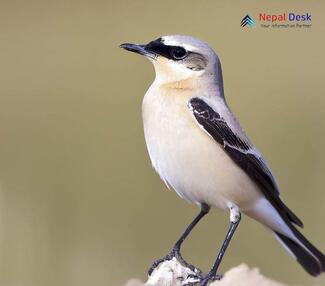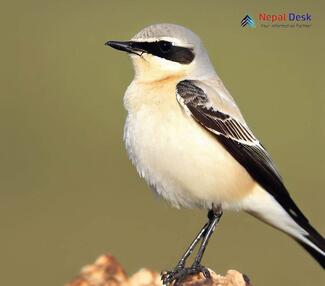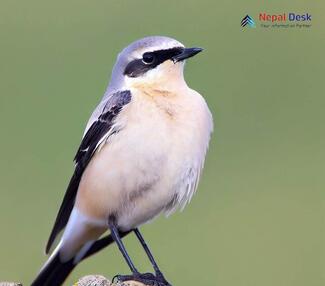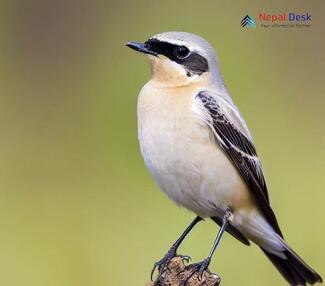The Northern Wheatear, or Oenanthe oenanthe, is a renowned migratory bird known for its breathtaking appearance and remarkable journey across continents. This small yet captivating creature belongs to the family of Muscicapidae and has captured the attention of bird enthusiasts and researchers alike. In this article, we will delve into the remarkable details of the Northern Wheatear, and its presence in the diverse and picturesque country of Nepal.
A Closer Look at the Northern Wheatear
The Northern Wheatear is a sight to behold with its distinct features. Sporting an appealing color palette with blue-grey upperparts, black wings, and buff to white underparts, this bird stands out with its striking black cheek patch outlined by a white border. The bird's long tail also exhibits features unique to its species - a conspicuous white rump and central black feathers create an unmistakable visual display.
Male and female Northern Wheatears exhibit similar color schemes, with slight variations in shades and hues. While males boast more vibrant colors, females can be distinguished by their slightly paler appearance. Juveniles possess a more toned-down version of their adult counterparts' colors.
The Presence in Nepal: Migratory Patterns and Habitat
The rich biodiversity of Nepal provides an ideal setting for the thriving presence of the Northern Wheatear during its migratory period. The country's varied landscape includes mountains, hills, grasslands, forests, and wetlands that cater to an extensive range of avian species.
Northern Wheatears arrive in Nepal from their breeding grounds in Northern Europe, Asia, Alaska, Greenland, and even parts of northern Canada. Their impressive migratory journey spans continents as they seek warmer climates for the winter months. The species has been recorded arriving between April-May during the spring migration and September-November for the fall migration.
In Nepal, Northern Wheatears can be observed in various elevations, ranging from 2,000 meters up to 5,000 meters above sea level. Though they are predominantly ground-dwelling birds, they do adapt to higher altitudes in search of their preferred habitat. Open areas with short vegetation and rocky patches offer ideal conditions for nesting and feeding purposes. Grasslands and the outskirts of forests are also sought-after nesting grounds for these migratory visitors.
Conservation Status and Importance
The International Union for Conservation of Nature (IUCN) has categorized the Northern Wheatear as being of "Least Concern" due to the species' extensive range and stable population. However, like other birds, the Northern Wheatear still faces threats from factors such as habitat loss, climate change, and human intervention.
Studying the migratory patterns and presence of the Northern Wheatear in Nepal can provide valuable insights into the overall health of our ecosystem. As they traverse vast geographical areas during their migration period, they serve as indicators for environmental shifts. Monitoring their population fluctuations can help gauge larger ecological patterns that might otherwise remain undetected.
In conclusion, the Northern Wheatear (Oenanthe oenanthe) embodies the resilient spirit of nature with its incredible migratory journey across continents and adaptation to varied habitats. Its presence in Nepal highlights not only the rich biodiversity that this nation boasts but also underscores the interconnectivity of our global ecosystem. By understanding and appreciating these enigmatic avian visitors, we can continue to work towards ecological monitoring and ultimately achieve a healthier planet for both humans and wildlife alike.




